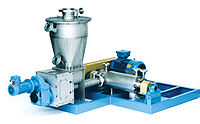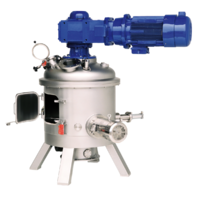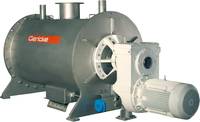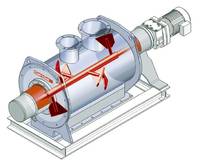Difference between revisions of "Paddle Blenders"
(Created page with "Category:Mixing{{Knoppen}} <noinclude><!------------------------------------------------ * READ THIS FIRST * Only edit this page if you can improve the content. * Improper u...") |
|||
| Line 1: | Line 1: | ||
[[File:HOSOKAWA-MICRON.gif|right|230px|link=http://www.hosokawamicron.nl/template.asp?paid=47|HOSOKAWA MICRON]] | |||
[[Category:Mixing]]{{Knoppen}} | [[Category:Mixing]]{{Knoppen}} | ||
<noinclude><!------------------------------------------------ | <noinclude><!------------------------------------------------ | ||
| Line 7: | Line 8: | ||
* Please start editing this page after the /noinclude | * Please start editing this page after the /noinclude | ||
* -------------------------------------------------></noinclude> | * -------------------------------------------------></noinclude> | ||
[[Image:High-speed-horizontal-paddle-Mixer.jpg|thumb|200px|A High speed horizontal paddle Mixer]] | |||
[[Image:Ribbon-paddle-mixers.png|thumb|200px|A combination of a ribbon and a paddle mixer]] | |||
[[Image:Paddle-Mixers-Logo.gif|thumb|200px|Paddle Mixer]] | |||
[[Image:Paddle-batch-mixer.jpg|thumb|200px|Paddle Batch Mixer]] | |||
[[Image:Paddle-mixer.jpg|thumb|200px|Schematic Paddle Mixer]] | |||
'''Paddle Blenders''' are used to [[Mixers | mix]] or blend a wide range of materials used in different industries including the food, chemical, pharmaceutical, plastic and mineral industries. They are mainly used to mix different materials using different types of blades to make a good quality homogeneous mixture. They can operate at different temperatures and pressures for mixing different solutions and can also have internal or external heating systems added to them. Options also exist where spray nozzles, CIP, PLC and pneumatic or electric systems can be used. Systems can come equipped with hydraulic or electronic soft start mechanisms so that they start and stop smoothly. | |||
== Principle of operation == | |||
The rotating paddles divide and blend sequentially the mass of product and generate a quick and intense movement of each particle through the mixing chamber (convection). Due to the defined angle of the paddles, the mixer shows an excellent axial and radial dispersion. Using choppers, additional energy is applied to the product to break up lumps and ensure the dispersion of any agglomerates or liquids. They are also used for granulation processes as well. The mixing time depends on the desired process and the characteristics of products involved. For standard mixing applications the mixing time varies between 3 to 5 minutes. For emptying, the product is transported to the outlet valve for a quick and complete discharge of the mixer. | |||
== Area of application== | |||
The mixing paddles rotate with variable speed. Froude numbers between 0.7 and 3.0 are reached. This mixer can therefore work in many different processes and working conditions. | |||
== Typical applications == | |||
* Chemicals | |||
* Agro-Chemicals | |||
* Detergents | |||
* Plastics | |||
* Dyestuffs | |||
* Pigments | |||
* Plaster | |||
* Rubber | |||
* Glue | |||
* Food | |||
* Construction | |||
* Chemicals | |||
* Industrial and Sewage Sludge | |||
== Advantages == | |||
* Universal mixer for various applications | |||
* Robust design | |||
* Process capabilities | |||
* High throughput | |||
* Good mixing homogeneity | |||
== Video == | |||
<youtube>WgtAhQ3nGJ0</youtube> | |||
<youtube>vR4f2hSBbm8</youtube> | |||
Revision as of 02:29, 14 February 2012
Paddle Blenders are used to mix or blend a wide range of materials used in different industries including the food, chemical, pharmaceutical, plastic and mineral industries. They are mainly used to mix different materials using different types of blades to make a good quality homogeneous mixture. They can operate at different temperatures and pressures for mixing different solutions and can also have internal or external heating systems added to them. Options also exist where spray nozzles, CIP, PLC and pneumatic or electric systems can be used. Systems can come equipped with hydraulic or electronic soft start mechanisms so that they start and stop smoothly.
Principle of operation
The rotating paddles divide and blend sequentially the mass of product and generate a quick and intense movement of each particle through the mixing chamber (convection). Due to the defined angle of the paddles, the mixer shows an excellent axial and radial dispersion. Using choppers, additional energy is applied to the product to break up lumps and ensure the dispersion of any agglomerates or liquids. They are also used for granulation processes as well. The mixing time depends on the desired process and the characteristics of products involved. For standard mixing applications the mixing time varies between 3 to 5 minutes. For emptying, the product is transported to the outlet valve for a quick and complete discharge of the mixer.
Area of application
The mixing paddles rotate with variable speed. Froude numbers between 0.7 and 3.0 are reached. This mixer can therefore work in many different processes and working conditions.
Typical applications
- Chemicals
- Agro-Chemicals
- Detergents
- Plastics
- Dyestuffs
- Pigments
- Plaster
- Rubber
- Glue
- Food
- Construction
- Chemicals
- Industrial and Sewage Sludge
Advantages
- Universal mixer for various applications
- Robust design
- Process capabilities
- High throughput
- Good mixing homogeneity
Video




